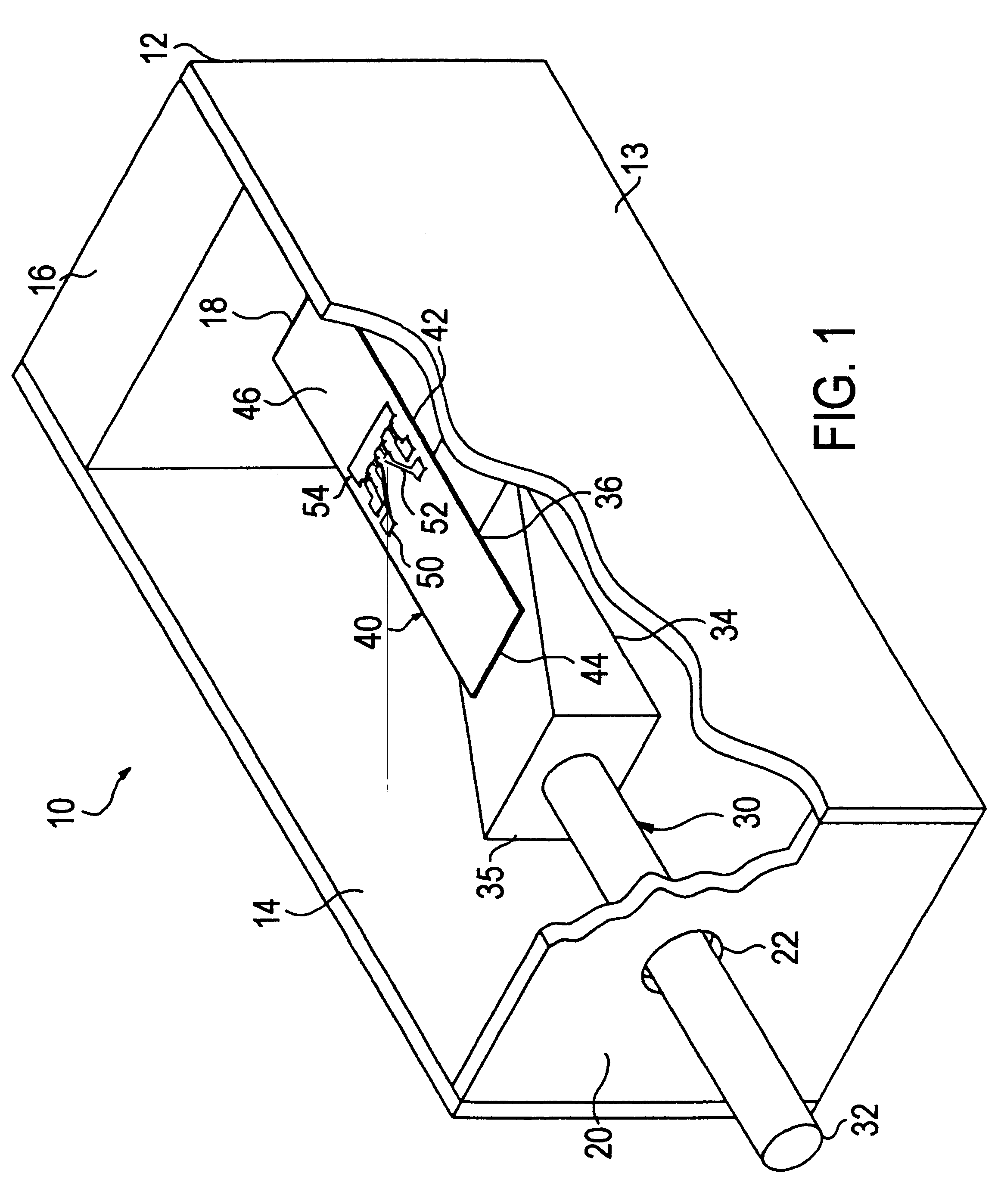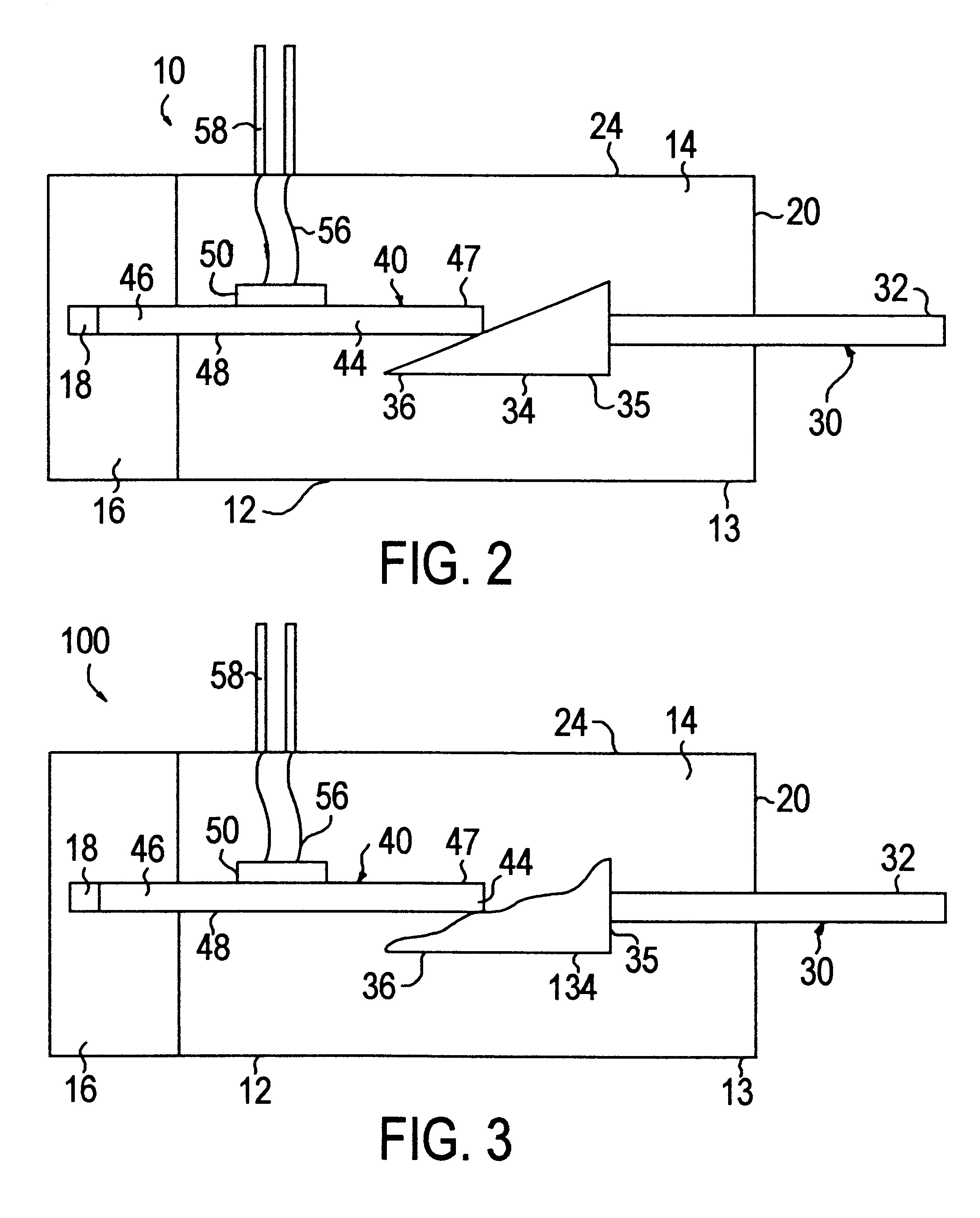Linear position sensor using a strain gage
a strain gage and position sensor technology, applied in the field of position sensors, can solve the problems of road contaminants, and inability to meet the requirements of all position sensing applications
- Summary
- Abstract
- Description
- Claims
- Application Information
AI Technical Summary
Problems solved by technology
Method used
Image
Examples
Embodiment Construction
(s)
Linear Position Sensor
Referring to FIGS. 1 and 2, a preferred embodiment of a linear position sensor using a strain gage 10 is shown. A housing 12 has outer walls 13 that define a cavity 14. Housing 12 has an end 16 with a slot 18 and an end 20 with a hole 22. A cover 24 is mounted over housing 12 to seal cavity 14. Housing 12 and cover 24 can be formed from injection molded plastic. Cover 24 is ultrasonically welded or heat staked to housing 12 to seal the sensor 10.
An actuator 30 is mounted in cavity 14. Actuator 30 has a shaft 32 attached to a sloping or tapered ramp 34. Ramp 34 has a thick end 35 and a thin end 36. Shaft 32 is attachable to an object whose position is desired to be measured such as an EGR valve. A sensor or strain gage 40 is located inside cavity 14. Sensor 40 has a substrate 42 with ends 44 and 46, an upper surface 47 and a lower surface 48. End 46 is press fit into slot 18 in order to hold the sensor. Substrate 42 is preferably formed from 430 stainless ste...
PUM
| Property | Measurement | Unit |
|---|---|---|
| thick | aaaaa | aaaaa |
| durable | aaaaa | aaaaa |
| electrical | aaaaa | aaaaa |
Abstract
Description
Claims
Application Information
 Login to View More
Login to View More - R&D
- Intellectual Property
- Life Sciences
- Materials
- Tech Scout
- Unparalleled Data Quality
- Higher Quality Content
- 60% Fewer Hallucinations
Browse by: Latest US Patents, China's latest patents, Technical Efficacy Thesaurus, Application Domain, Technology Topic, Popular Technical Reports.
© 2025 PatSnap. All rights reserved.Legal|Privacy policy|Modern Slavery Act Transparency Statement|Sitemap|About US| Contact US: help@patsnap.com



